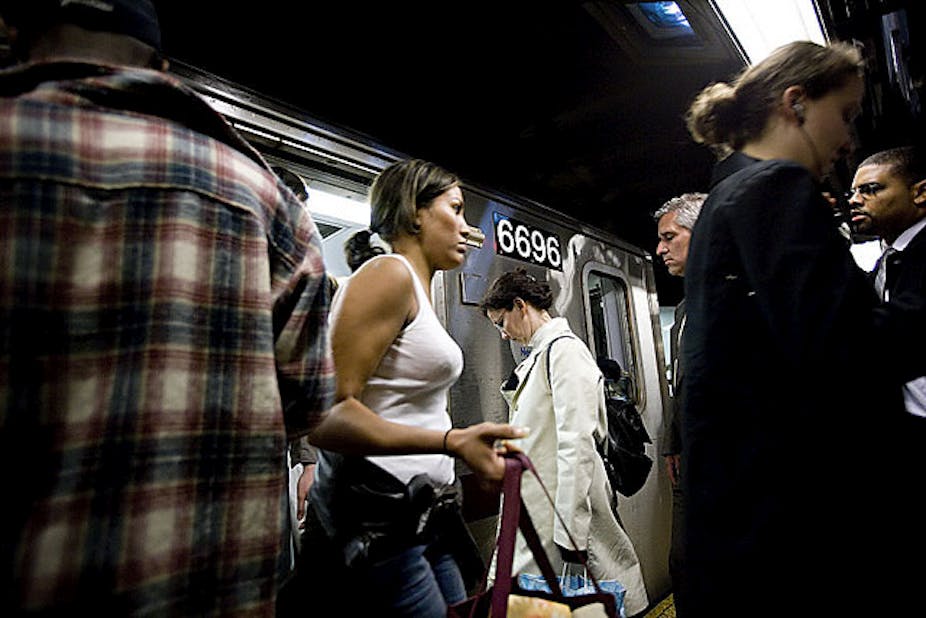There is a high level of bipartisan support for public transport investment in Australian politics. Parties of all colours are willing to promise rail schemes and bus improvements (in marginal electorates), fare restructures (targeting outer suburban seats) and improved management of public transport (to highlight past government failings) to win elections. Get public transport wrong, as in NSW or Victoria over the last decade, and it has dire political consequences.
The House Republican’s Transport Bill
The US has had a remarkable bipartisanship on transport as well, with Republicans and Democrats for 30 years both locking in 20% of national highway trust income from gas taxes to support public transport initiatives. But now that’s all over.
Congress is fiercely debating a $260 billion US National Transportation Bill, which needs to be passed by 31 March 2012. The Republican Party has deliberately targeted public transport for major cuts in the transport budget.
House Republicans in February introduced a bill that would commit all national highway trust monies to be spent on roads and bridges, with only an emasculated one-off sum for public transport and other programs. The cull even includes cost-effective schemes that deal with dangerous traffic at primary schools in problem locations.
Since its emergence, the House bill is losing support, with a softer Senate version likely to proceed. But it shows a deep cleavage in ideology around cities and urban transport priorities in the US. The Republicans are deliberately selling themselves as the pro-road, gas-guzzling, anti-urban party.

Given public transport relies on large subsidies from the state, with services often targeted to meet social needs, it is an obvious target for radical small-state ideologues like the Tea Party. But proposing to take away funding for buses and trains allows Republicans to metaphorically whack environmentalists, inner-city liberals, and black communities around the head, and appeal to their core constituency in the suburbs of the US.
Why Australia is different
Such a political move wouldn’t work here. Polls regularly show public transport is greatly desired in Australia’s inner-city and outer-suburban electorates alike, despite public transport use being low the further you get from the central city.
There are some explicit anti-urban political leanings in Australia’s suburban heartlands, most notably in reactions to urban densification (apartment towers) that often cut across class and some ethnic lines. But these leanings aren’t as pronounced as in the US, and public transport is not viewed as only an inner-city concern.
Though pro-roads policies are often pitched by politicians, the healthy state of Australian federal and state budgets allows the parties to offer suburbanites and the inner-city public transport improvements that win votes. Unfortunately, the way they proceed often leads to problems.
Chasing votes vs. good transport policy
Let us focus on just three of the more obvious challenges that emerge.
The first is the difficulty in promoting service improvements based on buses and better integration. Though the most obvious low-cost “solution” for many fringe areas of our cities may be carefully timed feeder buses to more frequent rail services in the suburbs, it’s a hard sell.

Far easier is to pitch a tangible object of desire like a light rail or suburban rail extension - a veritable “transport of delight”. The Greens recent promotion of a well-intentioned but clumsy light rail scheme in Perth is but one obvious example of this problem.
Second, investments prioritised on the basis of getting votes are often sub-optimal. Places that vote consistently for one party get overlooked in public transport election commitments. Just look at Queensland’s Sunshine Coast, destined soon to be the largest city in Australia without a line-haul dedicated public transport system.
When public transport becomes upper-class welfare
Third, public transport largesse is often heaped on wealthy neighbourhoods in the inner-city. Our cities still focus so much commercial and residential activity in central areas, and our planners haven’t thoughtfully decentralised some of that development to suburban activity centres. So the clamour for expensive “congestion-busting” transport projects in the inner-city is unstoppable.
But some of the provision is clearly upper-class welfare and this is where suburban passions could get aroused. The subsidies to keep certain Sydney ferries running on low-patronage routes to high-income suburbs like Rose Bay are a case in point. Such routes are, on a per-service or per-passenger basis, some of the most subsidised urban public transport routes in Australia.
There are many other Australian transport projects and programs that are questionable in equity terms, from tram extensions and high-quality bus routes that are gifted to private urban development projects, to struggling public bicycle hire schemes (which would be fine if they were working), to light rail and metro proposals that barely leave the central business district.
Given the nature of our democracy, it’s hard to see much of this changing in the near future. But we need to overcome these challenges and get more from our public transport dollars, for all our benefit.

